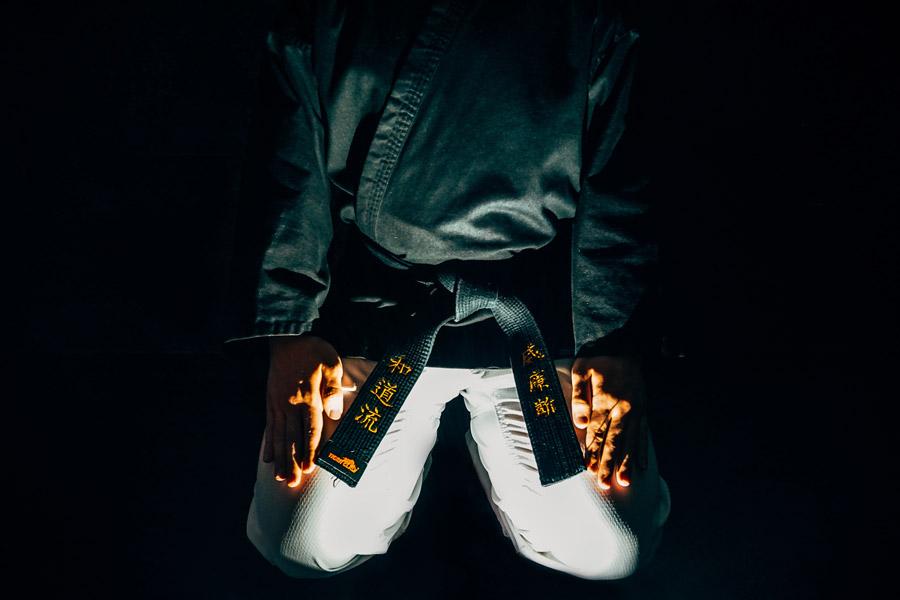When most people think of martial arts, they think of self-defence. Although there is a lot to learn about that, it’s not the only thing you’ll gain from training in Aikido. It teaches discipline, patience, and how to work with others. It provides mental clarity and physical agility. Plus, it has improved health benefits! You will find that this martial art is something worth trying because it truly changes lives. Read more to find out how Aikido martial arts can improve and change your life.

Who created Aikido?
Aikido is one of the martial arts termed Budo (武道) or Martial Way in Japanese. It was the creation of Morihei Ueshiba who was born in 1883 in the midst of a Japan going through immense changes towards modernity. It was in this climate where Samurai culture was still very influential that he would seek to find meaning and purpose for these traditions. Ueshiba was not alone in this as contemporaries like Jigoro Kano established modern Judo which developed from ancient jujitsu systems and Nakayama Hakudo, the founder of modern Iaido, a Japanese Sword art.
Morihei Ueshiba’s training was broad and encapsulated Aikijujitsu, Aikido’s predecessor, various other jujitsu and Kenjutsu sword schools. He would also practice a form of Shintoism which influenced his approach to martial art. He served in the Russo-Japanese war in 1904-05 and soon after tried to establish a lumber community in Hokkaido, a sparsely populated frontier terrain at the time and with no shortage of bandits. He even ventured into Manchuria in the 1920s with the deeply held belief of establishing a religious community. Throughout his training and adventures, his pursuit was to understand the meaning of Budo and Aikido would be the outcome of this search.
Remarkably when considering the rise of militarism of the early 20’s and 30’s, his creation was a martial art whose purpose was not to kill. This new ethos would ultimately make Aikido suitable for the post WW2 era as it continued to evolve with the times. Kenjitsu, Aikijutsu and Jujitsu are the older systems to Kendo, Aikido or Judo.

Aikido Principles
The “Do” component as in Aiki(do) means “Way” or a path of training that goes beyond technique alone. In the case of Aikido, it is “The way of Harmony with nature.” This concept is closely related to the mind-body and spirit unification – a Buddhist principle or influence. The literal description gives it a mystical slant, yet it refers to practical training as one learns to move with effective timing and position as you use your gravity against the opponent.
The mental attitude encouraged is a non-competitive one that strives through mutual and collaborative practice to raise the level in each participant and potentially go beyond one’s limitations. This is a creative process and quite a challenge. There are no “winner” or “loser” definitions in the usual way of tournaments. You get thrown or pinned down, you get back up again. You throw or pin someone but then it’s your turn to get thrown or pinned down once more.
Morihei Ueshiba
A Japanese proverb comes to mind. “Nana korobi, ya oki” which means “Fall down seven times, stand up eight.” It implies resilience and to not give up, a lesson in life as well as in training. It is incredibly invigorating, it is physical and technical all within the training as you get to feel the possibilities of the art.
You get to express martial energy without a destructive outcome. Martial qualities are a natural part of us that, when suppressed, may cause us to be negative, stale, or dull, which has an effect on us both mentally and physically. A system of training that accommodates this and channels it is good for you in mind and body as well as spirit. It all comes alive.
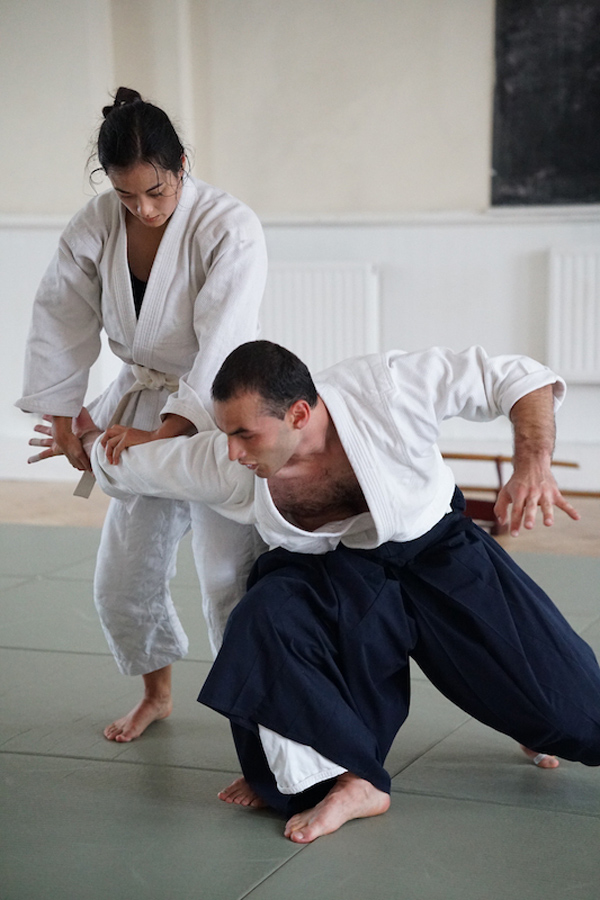

The effects of good training go beyond the matted area we call the dojo or “the place of training.” It can feed into our lives in obvious ways and other pleasantly unexpected ones. There are the usual physical benefits in terms of fitness, flexibility and strength but a body conditioned for Aikido is a connected and grounded one whilst it can extend and flow during movement. It is responsive and sensitive while relaxed and aware.
The Benefits of Aikido
One of the benefits many people appreciate is the ability to remain calm under pressure. Whether this is from potential danger or high powered professional careers which carry enormous stress, the ability to “ride it”, to “let it roll” is very much in play. As one of my Spanish students who works in the financial markets put it;
“When there is apparent chaos and even panic, I see opportunity.”
He credits Aikido training which helped with clearer thinking and action even as the situation grew ever more difficult.

Aikido vs. Karate
Aikido is not a fighting system in the strictest sense, that is to say, you are not learning to fight. It does however give you useful tools should they be needed. When compared with Karate, Aikido training takes longer to become useful. This is of course dependent on the individual’s ability and dedication and if they have a more martial outlook generally speaking. It is useful for security personnel, police as well as the public.
Whilst many martial arts have potentially devastating and therefore dangerous techniques, this is not always the best solution in our modern society. With good training, you learn to off-balance a would-be aggressor and decide how to neutralise from there rather than take them out regardless of the situation. This of course takes time to learn and the ability to achieve this depends on the situation.
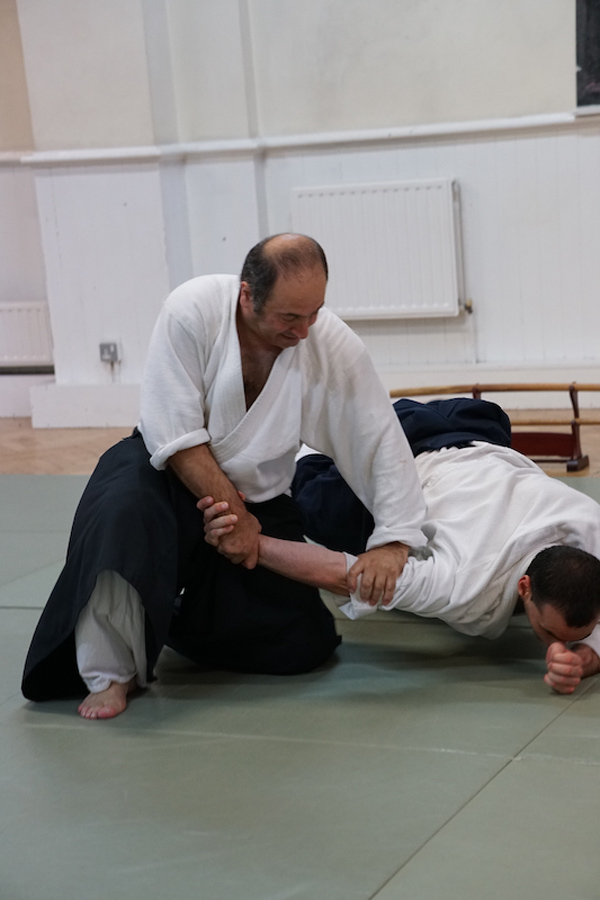
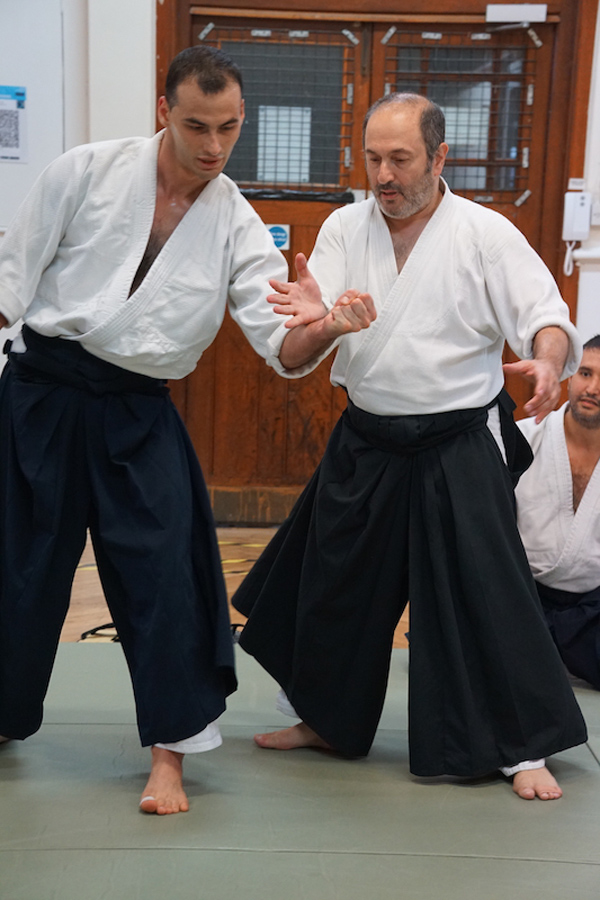
Aikido Self Defense
With regards to self-defence, about 20 years ago I had to deal with a man who came charging at me with a heavy wooden bar stool. He swung it viciously at my head but my reflexes kicked in as I leaned back just enough for him to miss me while the stool broke to pieces against the nearby wall. This threw him off balance as I then got myself in a position where I could have easily applied a choke or pin or used any other array of applications to neutralise him. Instead, I gave him the option to leave which he took. None of this was calculated and the training came in when it was needed. The full story can be found on my blog at Upside down inside Out.
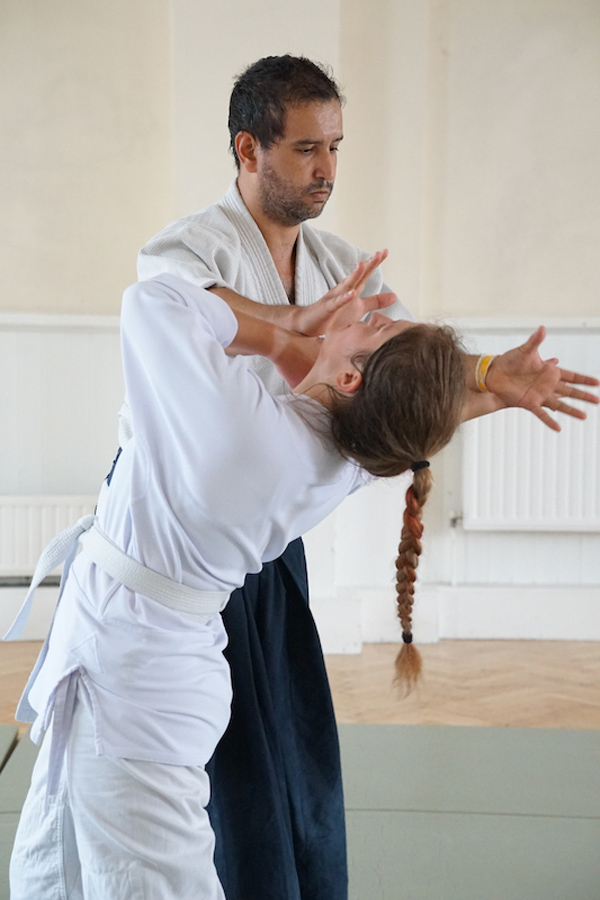
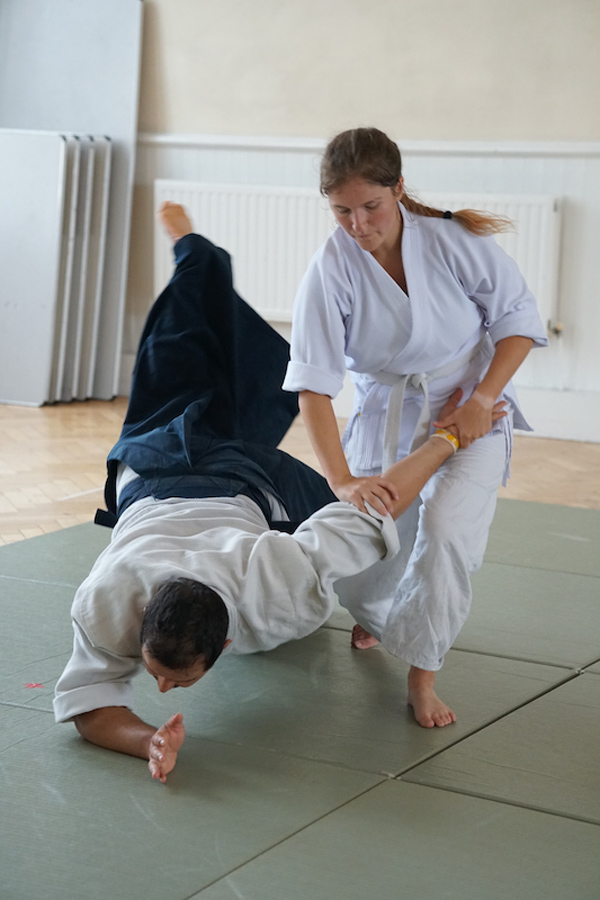
Women in Aikido excel when given the opportunity. This usually means when they are taken seriously which is something I have always encouraged. Martial art historically has been male-dominated so it comes as no surprise that women have faced obstacles along the way. It is perhaps that generally speaking women are physically weaker than men, though no less determined and quite often with a stronger character.
This imbalance in strength highlights that you cannot execute technique just physically and need to allow the “spirit” to come out. Something that women have to address much earlier in their training. As men tend towards strength they can struggle to find a different way to use that strength whereas women are faced with that almost from the outset. Intelligence, observation, focus and attention are all needed.
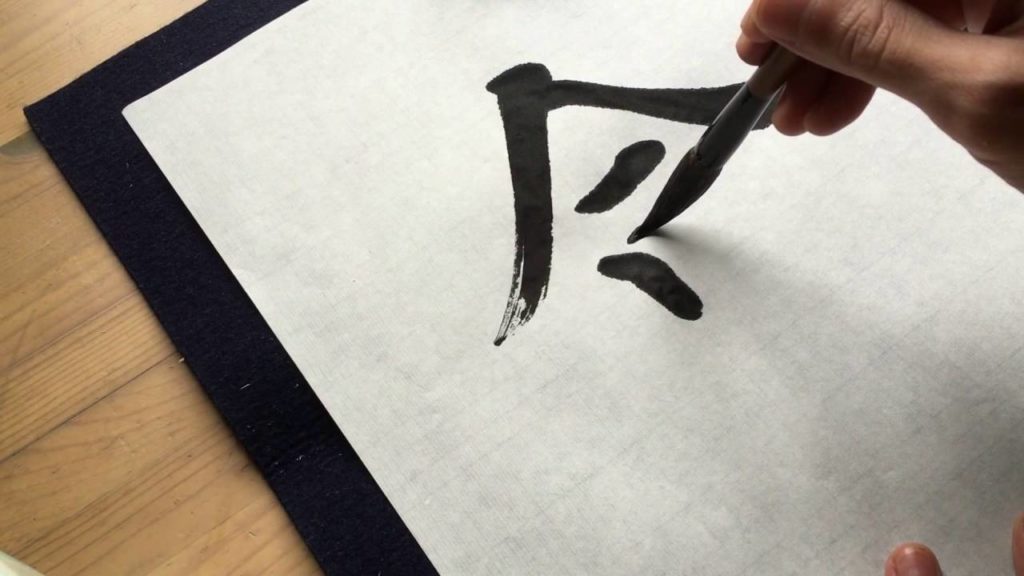
A Calligraphy of Dance
A last thought in studying Aikido. In Japanese sword work the term “Ken no me” is often mentioned. This roughly translates to “Seeing what is there with your eyes”. This seems obvious but already a challenge for some. The other term is “Kan no me” which is roughly speaking “To see with the mind.” This is difficult to explain but insight and intuition are words that come to mind. This is also understood well in Shodo or Japanese Calligraphy where the student copies the outward form of each character that “they see” from past masters as they attempt to capture the “inside energy” or “Ki”.
A good calligrapher is like a good martial artist, cultivating a strong mind and spirit. This way of understanding Budo gives some context to these traditions and therefore helps to see, pun intended, Aikido in a different context from the more modern “sport combat” systems like MMA.
Learn Aikido in Archway, London
If you have enjoyed this post and are curious to try Aikido, we have a trial class and a 4 session beginners workshop to give you a taste of it. These can be booked from here. It is also the gateway for regular training should you continue beyond these and join Aikido of London. Our schedule is extensive and includes children 7-15yrs old, annual seminars and private daytime classes. Take a look at our website for further information and if you have any questions please contact us at [email protected].





































